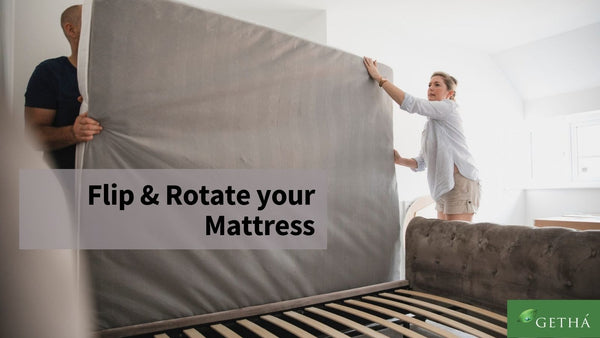The price of a mattress can vary from budget to high-end depending on the brand and material used. If you have been eyeing one that’s going to take a chunk of your savings, this article is for you. Knowing how to make mattresses last longer (especially expensive ones) will make every cent count.
Here are some mattress care and maintenance tips that will determine the lifespan of your mattress to give you consistent comfort and support throughout the years.
1. You Gotta Clean Your Mattress
Taking care of your mattress isn’t just putting a clean bedsheet over it. It involves basic mattress care including learning how to clean it. Believe it or not, cleaning a mattress doesn’t require strenuous effort or complicated steps. Here’s how:
Step 1: Remove dust by using a vacuum cleaner.

Select the upholstery tool to make it easy to vacuum the main body of your mattress. To get into the corners and folded sides, change the head of the vacuum cleaner with the crevice tool.
How often should you vacuum your mattress?
It’s a good idea to do so every 3 to 6 months or each month. If you have allergies, you may need to vacuum more often to remove dust and other allergens on your bed.
Step 2: Steam your mattress.
This can be easily done with a garment steamer. Hold the nozzle close to the mattress fabric without letting the steamer drip water. Do this throughout the mattress. The high-temperature steam will penetrate and kill dust mites and their eggs, creating a clean and healthy environment in your bedroom without resorting to chemical products.
Step 3: Vacuum the mattress again to remove dead bed bugs.
Remember to also wash your bedsheet and bedding covers every week or once in two weeks.
2. Use a Mattress Protector to Prevent Spills And Stains

To make your mattress last longer, place a mattress protector on top before covering your entire mattress with a bedsheet. How it protects your bed is that it essentially prevents spills and bodily fluids from seeping through to avoid premature damaging. Not only does it maintain the condition of the mattress, but it also fends off unpleasant odour and dirt. Getha’s range of mattress protectors is perfect to keep your bed clean for better sleep while extending the lifespan of your mattress. From soft and breathable bamboo fibre protectors to anti-static and Nano Silver antibacterial protectors, they aren’t just for leak protection and ultimate hygiene, but also to give your bed additional softness and more!
When you choose to use a good quality mattress protector, you can be sure your mattress only needs minimal cleaning and care so that you can have more time on your hands for more urgent matters. Typically, a mattress protector should be cleaned using mild detergent every two months. If there’s a stain, attend to it immediately to avoid permanent staining.
3. Get a Bed Frame to Properly Fit Your Mattress

Uneven weight distribution happens when a person lies on top of a mattress that’s poorly supported by an ill-fitting bed frame. Smaller, light-weight mattresses require bed frame slats that are spaced closely, while larger, heavier mattresses need a bed frame with extra legs in the centre or a solid box base (i.e box spring bed).
By pairing your mattress with an appropriate-fitting, solid foundation, you won’t have to experience lying on an uneven mattress long term which can cause poor posture, spine misalignment and back pain.
Some may be wondering if it’s better to not have a bed frame at all, but here’s the catch: putting a mattress on the floor can potentially create a mould issue. If you live in a humid environment, the surrounding moisture can accumulate at the bottom of the mattress which can promote mould growth. Furthermore, side sleepers will have a hard time sleeping as the floor might create a sleeping surface that’s too firm while causing painful joint pressure.
Read more: Tips of Choosing the Right Bed Frame
4. The Classic Mattress Rotation

If there’s something that taught us about university life, it’s flipping hostel mattresses to make our sleep more comfortable. Likewise, when your mattress begins to sag or has indentations, don’t rush to replace a new one just yet. Simply flip it over to lie on the unused surface.
In fact, it’s ideal to rotate latex, foam and modern innerspring mattresses every 6 to 12 months, while older innerspring mattresses should be rotated every 2 to 6 months. However, not all mattresses are flippable. For example, rotating a zoned-design mattress might decrease comfort and supportiveness.
5. Change Your Mattress When It's Time
A typical mattress can last between 7 and 10 years if you know how to take proper care of it. After maximising the supportive and pressure-relieving capabilities it can offer, it’s really time for a new mattress. Nobody likes to wake up feeling half-rested while working throughout the day.
If you are in need to replace your bed mattress or require detailed advice on how to take care of your latex mattress, approach our friendly sleep consultants!









